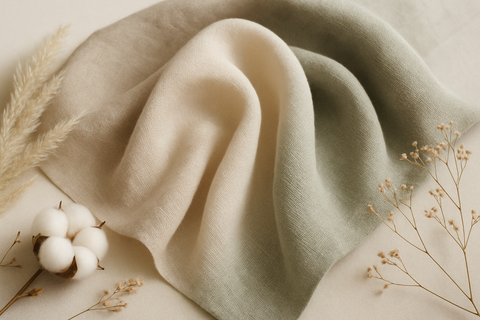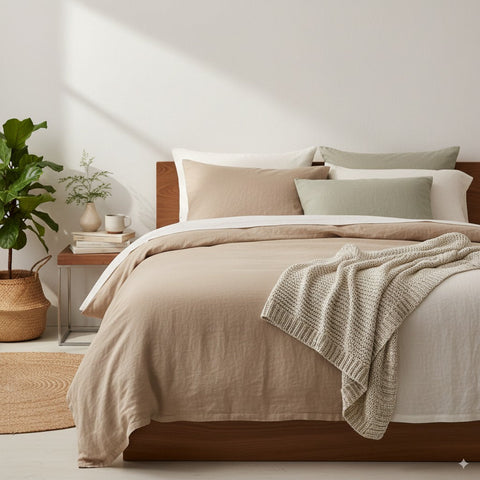Linen is more than just a fabric—it’s a legacy. Woven from the fibers of the flax plant, linen is one of the oldest textiles in human history, dating back over 10,000 years. But even in today’s fast-paced world of synthetic blends and fast fashion, linen continues to hold its ground. Why? Because it's natural, breathable, durable, and effortlessly elegant.
What Is Linen?
Linen is made from the stalks of the flax plant (Linum usitatissimum). Unlike cotton, which grows on bushes, flax is a tall, reed-like plant that requires less water and fewer pesticides. After harvesting, the fibers are extracted through a process called retting, then spun into yarn and woven into fabric.
The result? A crisp, textured textile that softens with age and wear.
Benefits of Linen
1. Breathability and Comfort
Linen has superior airflow. It doesn’t trap heat or cling to your body, making it ideal for warm climates or summer bedding. Its moisture-wicking properties pull sweat away from the skin, keeping you dry and cool.
2. Hypoallergenic and Antibacterial
Linen naturally repels bacteria and doesn’t irritate sensitive skin. It’s an excellent choice for people with allergies or skin conditions like eczema or rosacea.
3. Durability
Linen is one of the strongest natural fibers—30% stronger than cotton. It can withstand repeated washing, sun exposure, and daily use. In fact, linen sheets or clothing often last for decades with proper care.
4. Eco-Friendly
Flax is a low-impact crop. It grows quickly, uses minimal water, and almost every part of the plant is used—making linen one of the most sustainable fabrics on the market.
5. Timeless Aesthetic
With its slightly wrinkled, lived-in look, linen gives off effortless elegance. Whether it’s a crisp white shirt, a rustic tablecloth, or a soft bedding set, linen offers that perfect mix of refinement and relaxation.
Common Uses for Linen
-
Clothing: Especially shirts, pants, and summer dresses.
-
Bedding: Sheets, duvet covers, and pillowcases for breathable sleep.
-
Home Textiles: Curtains, napkins, tablecloths, and upholstery.
-
Accessories: Tote bags, scarves, and even shoes.
How to Care for Linen
-
Wash cold or warm with gentle detergent.
-
Avoid bleach—it weakens fibers.
-
Air-dry or tumble dry low. Linen softens over time.
-
Don’t over-iron—the natural wrinkles are part of the charm.
Final Word
Linen isn’t trendy—it’s eternal. In a world flooded with fast fashion and synthetic fibers, linen stands out as a natural, sustainable, and beautiful choice. Whether you wear it, sleep in it, or decorate with it, linen rewards you with comfort, strength, and understated luxury that only gets better with time.






